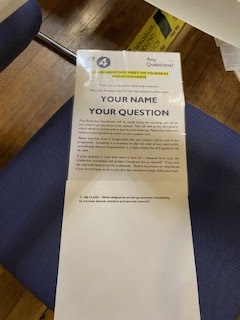In writing my latest, I confess how much in awe I am at my contemporaries; e.v.e.r,y s.i.n.g.l.e one of them.
Recently, on my website, I explained the benefits of a
seaside retreat for promoting a writing mindset, but what I didn’t mention - watching
the countless runners on the promenade – (while very much “seated” on a
sea-facing bench), is how inspiring I find any runner - of any size – because it
takes some gruelling, overcome-the-mind-barriers, next-level dedication.
Were all fighting to overcome the mental/physical barriers
in our own, creative ways.
It’s not like I’ve never written anything before for
pity’s sake... but something about my latest is stretching me in ways I couldn’t
possibly imagine before I started out. Honestly, writing The Children at the
River’s End was like writing the Hungry Caterpillar in comparison. (No offence,
Eric Carle. RIP.) I’ll rise to the challenge, and won’t go down without a fight
of course. No retreat, no surrender, and all that jazz. I’ve come too far now, surely…
right?
I recently shared with a pal about the obstacles I’ve been
facing with this project (cue, non-writing friend’s look of utter confusion),
namely: cultivation, chronology, and cross pollination. (Yes, I go deep enough
to perform a form of alliteration, and share it all in a beer garden.)
Here goes. I’ll deal with the first (or try to).
Cultivation: It’s the first in a series (that I have big
plans for) so how much do you reveal in the first that keeps the reader
satisfied, yet hungry for more - and, by the same token - leaves them ‘hanging’…
without raising genuine concerns about the overall substance and legitimacy of
the story? In other words, how much of the story needs truly tying up by the final
scene to maintain congruity?
Aarrrggghhhhh!
Cultivation (2): which seeds need to blossom faster within
the story (and be royally displayed in their colourful aplomb) while others are
temporarily mentioned, but cast to one side (… effectively, laid dormant) subject
to an incidental reference for now, but could become major players in the
future?
Aarrrggghhhhh!
Honestly, juggling all this is like been asked to do the
limbo, while holding a steel 100kilo barbell in both hands. Pivot, pivot… pivot.
Right, I’m done for this evening. I’ll get onto Chronology
and Cross-Pollination in the near future. The weather here in London is bearable,
so I’m going to chill, and not over-think things. Needless to say, as always –
when all’s said and done – I love doing all this. 😊








